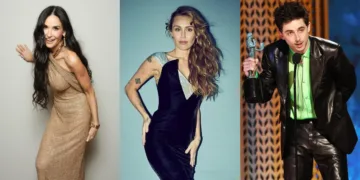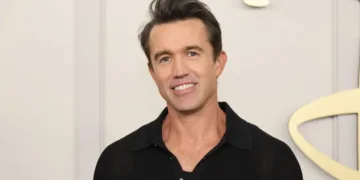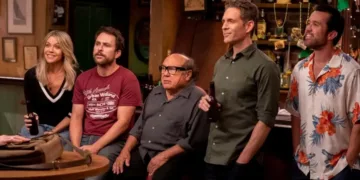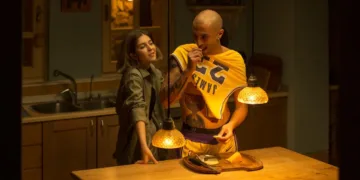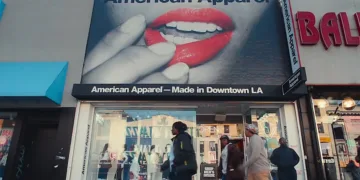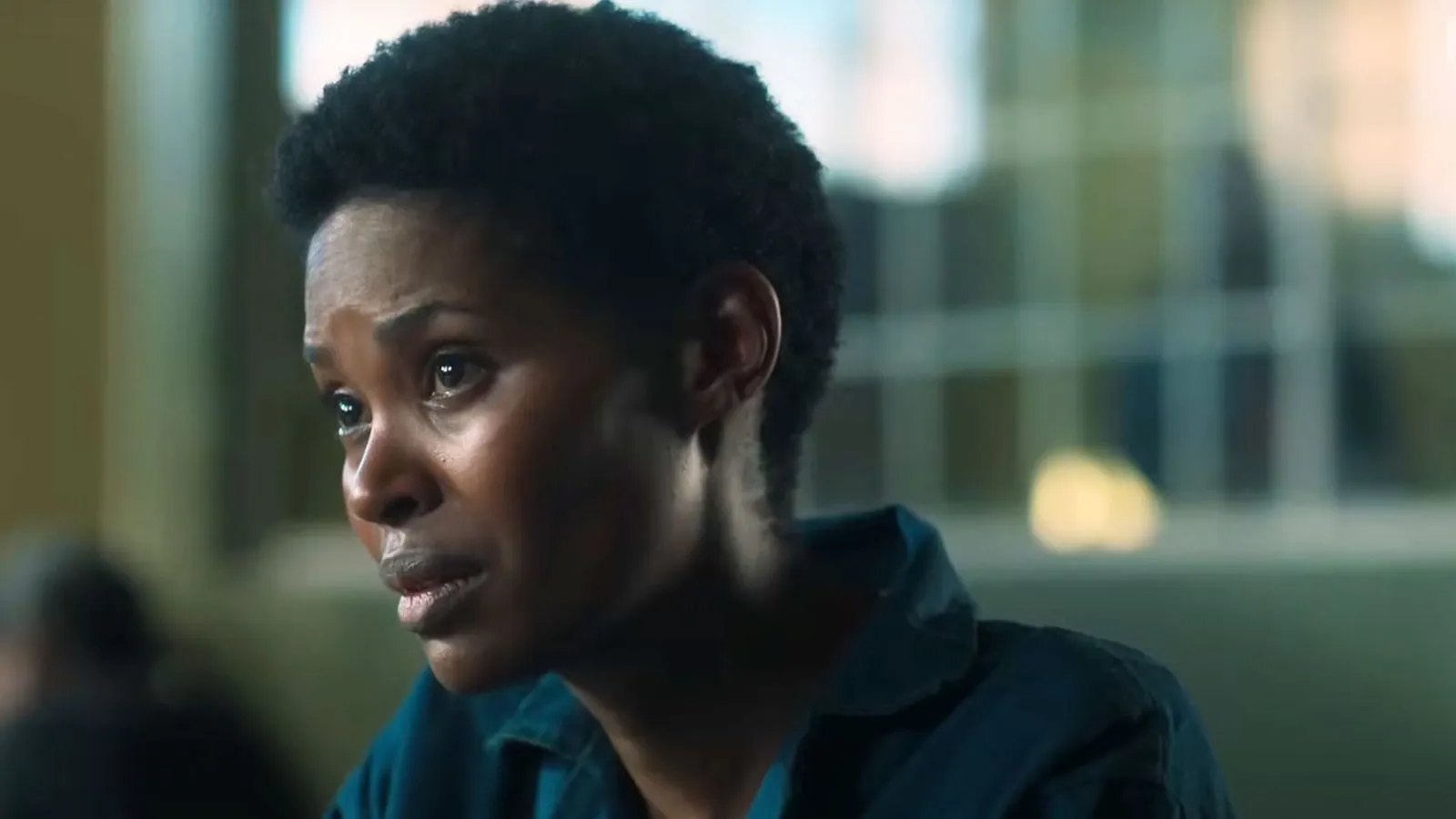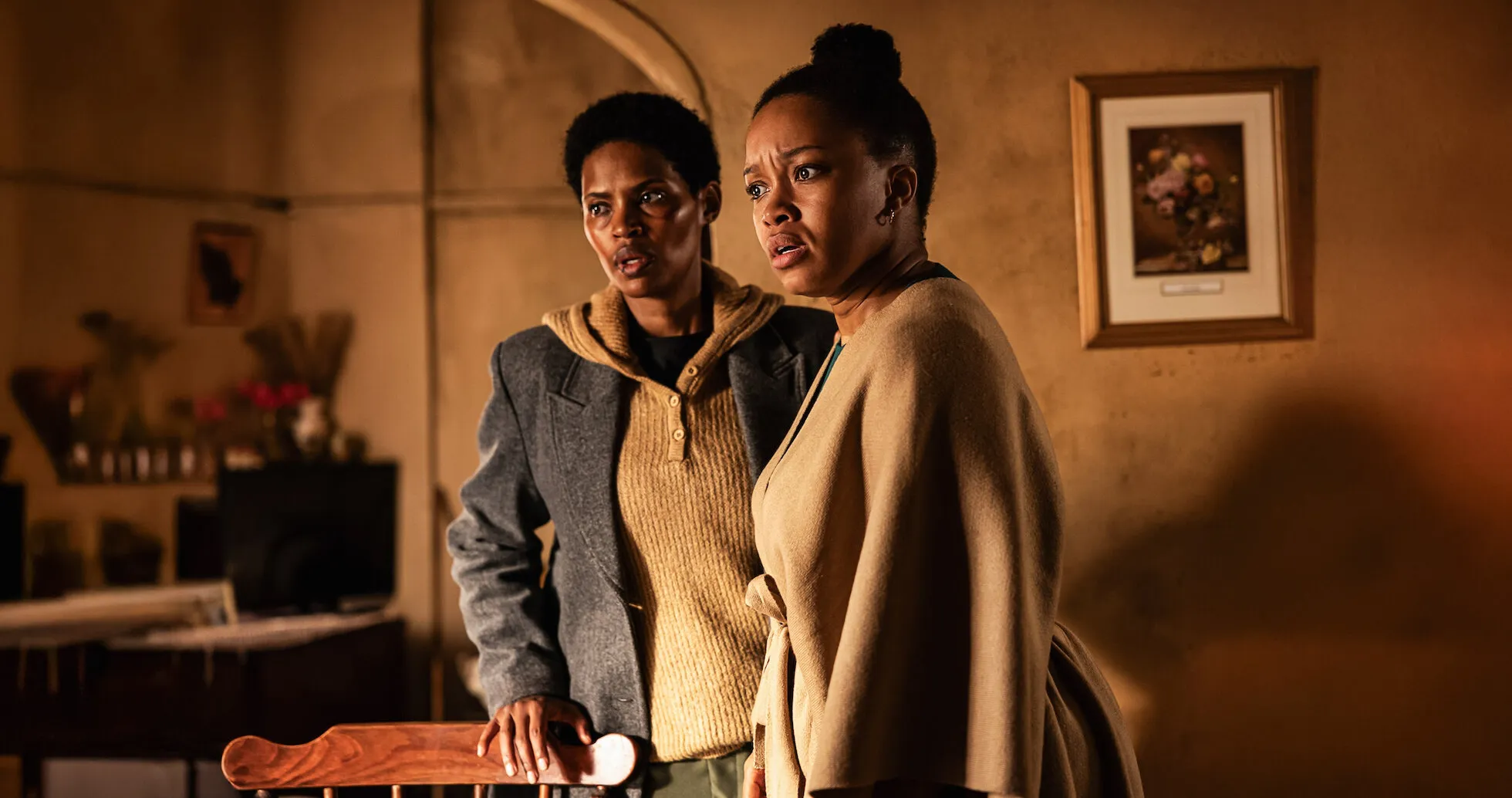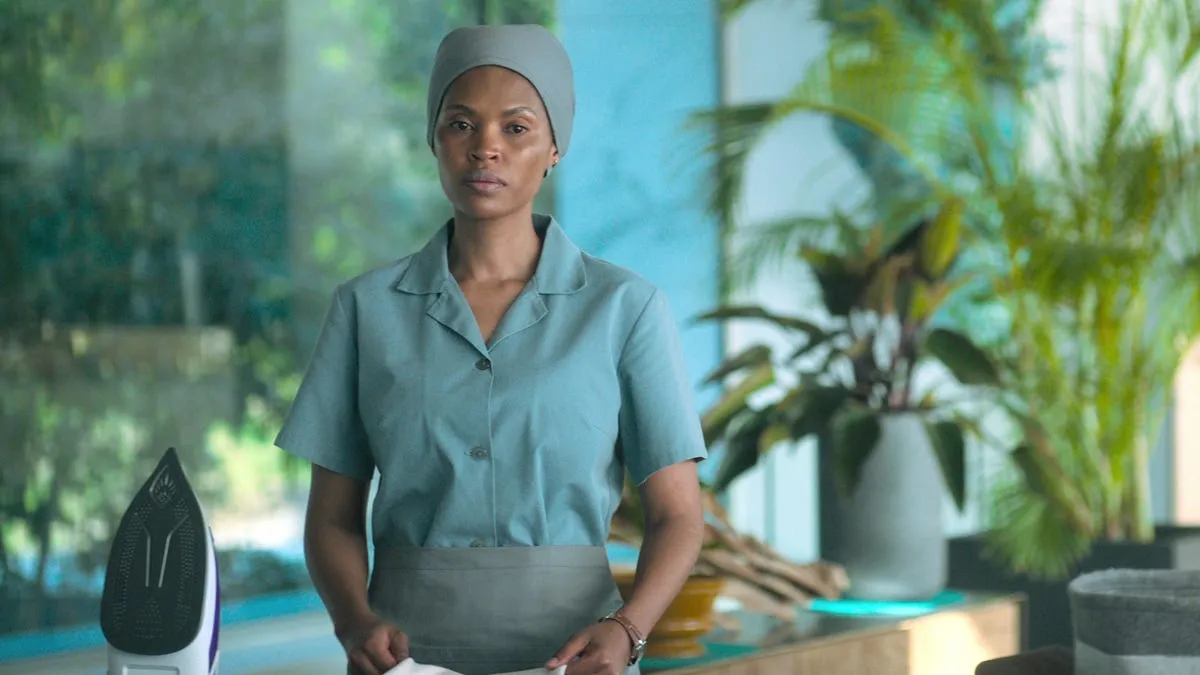At the heart of South Africa’s underworld, Unseen Season 2 unfolds like a fractured mirror, reflecting a society gripped by power’s unseen currents. From the moment Zenzi Mwale is hauled into a cell—her freedom stripped away, her body carrying new life—the series asks: when the self is reduced to a target, what remains?
Zenzi’s predicament is stark. Arrested for a string of killings, she awakens behind bars with a secret burgeoning within her. Pregnancy becomes both burden and beacon, a reminder that creation can spring from brokenness. As the walls close in, she must combat more than stone and iron. A sprawling bank conspiracy—threads woven through politics, wealth, ancestral privilege—threatens to smother her quest for redemption.
The season’s pulse never softens. Shadows cradle every corridor; neon flickers off prison bars. Action sequences feel less spectacle than ritual, each blow exchanged carrying the weight of existential defiance. Here, survival morphs into a moral crucible: is justice self‑styled vengeance or the promise of a world remade?
Philosophical currents run deep. Zenzi’s struggle summons questions of agency when systems deem certain lives dispensable. Through noir‑tinged visuals and a score that hums with unrest, Unseen Season 2 invites viewers into a realm where hope and despair dance at elbow’s length—each heartbeat a question inked in blood.
Threads of Fate: Narrative Arc & Plot Development
The season ignites with Zenzi’s descent into concrete shadows—her arrest a cold punctuation mark after a string of justified killings. Prison bars close around her, and with a tremor of revelation, she discovers new life stirring within. That flicker of hope collides with the darker truth: an OCM Bank conspiracy lurking beyond her cell, its tendrils pulling strings in distant boardrooms and underworld alleys.
Time fractures under the weight of memory. Flashbacks bleed through each episode, unveiling Zenzi’s past bloodshed and the childhood horrors that sculpted her unbreakable will. These reveries surface like wounds reopened, binding her present to a long‑dormant rage.
Meanwhile, the camera cross‑cuts ruthlessly: Zenzi’s silent endurance in damp cells juxtaposed against Det. Lyners and Morkel prowling through stacked files and hushed bank vaults. Each cut tightens the narrative noose, reminding us that freedom and capture are two sides of the same blade.
Milestones arrive with visceral force. The opening ER sequence—Zenzi handcuffed to a stretcher, ribs cracking against metal—refuses the trope of victimhood. Blood and defiance dance in equal measure. Then Naledi steps into the frame, her sister’s tear‑streaked eyes anchoring Zenzi’s battered soul. TK appears as both savior and specter: her protection laced with silent questions, loyalty shrouded by motives we cannot fully grasp until betrayal erupts in a single, shattering moment.
Across the mid‑season, Lyners and Morkel crack one secret vault after another, edging closer to Andrew Harting’s empire of old‑money decay. Their breakthroughs twist Zenzi’s path: what began as a bid for survival morphs into a purpose far sharper than revenge. As final confrontations loom, the series pulls back its veil just enough to promise a reckoning in the shadows yet to come.
Shards of Humanity
Zenzi Mwale emerges as a force tempered by suffering. At first, resignation drapes her like a heavy cloak—eyes hollowed by past violence, spirit muted by loss. Then a spark kindles. Determination steels her spine, turning each act of survival into a defiance of fate. Gail Mabalane channels exhaustion and rage in equal measure, her gaze flickering between grief and a fierce maternal protectiveness. The trope of invincibility—Zenzi shrugging off lethal wounds—becomes a philosophical puzzle: what does it mean to bear pain so deeply that pain itself bends to your will?
Naledi Mwale offers a contrasting mirror. Dineo Langa embodies intergenerational trauma with a softness that belies its weight. Her presence peels back Zenzi’s armor, revealing threads of vulnerability and love. In moments of quiet solidarity, the sisters reflect a question: can a bond born in darkness guide one back toward the light?
Detective Morkel and Det. Lyners occupy the moral fulcrum. Waldemar Schultz’s Morkel tilts between compassion and protocol, while Ilse Klink’s Lyners wrestles with the revelation that systems meant to protect can imprison more than bodies. Their interactions pulse with tension, each choice marking the fine line between empathy and obligation.
TK arrives like a half‑glimpsed shadow. Danica De La Rey Jones balances menace with unexpected fragility, her loyalty a shifting prism. One moment she shields Zenzi; the next, her motives fracture into uncertainty.
Lufuno drifts at the periphery, clutching a manuscript that whispers hope. Mothusi Magano’s quiet optimism stands in relief against the series’ grit, a reminder that stories can both wound and heal.
Andrew Harting towers as the specter of corrosion. Frank Rautenbach brings suave menace to old‑money corruption, embodying a philosophical decay where charisma masks moral rot.
Through other inmates, OCM operatives and fleeting cameos, the ensemble sketches a world where trust is an echo—and every character carries their own shard of humanity.
Veins of Justice and Shadow
Zenzi Mwale’s crusade teeters on a moral knife‑edge. She dispenses retribution where law falters, raising the question: can one’s personal code stand in for a broken system? Each act of vengeance pulses with philosophical tension—her wrath a testament to an anguished demand for justice, yet tinged with the hubris of self‑appointed authority.
OCM Bank looms as a colossus of quiet corruption. Its vaults and boardrooms mirror an unequal society, where wealth trickles down like poison. Here, power is distilled into profit, and the series uses the bank’s rot to sketch an allegory of entrenched privilege—echoing a history of dispossession that still haunts South Africa’s streets.
Pregnancy emerges as a fragile catalyst. In the belly of confinement, new life insists on possibility. Zenzi’s protective fierceness swells around her unborn child, weaving survival and motherhood into a single pulse. This motif reframes her violence: not a lust for blood, but a desperate bid to preserve a future.
Invisibility becomes Zenzi’s weapon. Once overlooked by society, she transforms into an unstoppable force—an embodiment of existential freedom. Her arc reflects Heidegger’s notion of authentic being: in the face of abandonment, she forges her own essence through decisive action.
Class and race reverberate through every alleyway and interrogation room. The legacy of apartheid whispers in each exchange of currency and contempt, reminding us that inequality is both legal code and social scar.
Trust fractures in a world built on hidden agendas. Alliances shift like desert sands, and betrayal lurks behind every whispered promise. In Unseen Season 2, loyalty is provisional, a reminder that in darkness, certainty itself may be the greatest illusion.
Shadows in the Frame: Style, Direction & Technical Craft
Light and darkness duel across each scene. The palette leans cool and drained, as if doused in moonlight, then ruptures with crimson in moments of violence—blood glinting like a warning. Shadows curl into corners, framing Zenzi in tight compositions that suggest both entrapment and emerging power. Every corridor feels alive with unseen threats, each cell a stage for her silent revolt.
The editing moves like a heartbeat. Fight sequences pulse with urgent rhythm: a bone‑crunching exchange in a hospital hallway, the raw choreography of fists against steel in a prison yard, furtive clashes in backlit alleyways. Then time dilates—flashbacks unfold in languid vignettes, silent pursuits stretch into torturous suspense. This play of acceleration and suspension invites reflection on suffering’s elasticity: pain can echo indefinitely, or shatter in a single instant.
Sound weaves through the city’s veins. Distant traffic hums beneath Zenzi’s labored breaths; overhead, percussion thunders when she summons her last reserves. Recurring motifs—haunting piano notes, metallic heartbeats—mark her emotional shifts, as if her inner life has taken sonic form.
Travis Taute orchestrates confined spaces with bold precision. In damp cells and fluorescent‑lit ERs, he stages human drama against brutal architecture. Location work feels lived‑in: Cape Town’s streets, worn and unforgiving, become characters themselves. Set details—a rusted grate, a blood‑stained mattress—anchor scenes in tactile reality, underscoring the series’ existential pulse.
Cadence of Shadows
The season launches with relentless thrust—an ER tableau bleeding into a claustrophobic cell—pulling viewers into Zenzi’s world at breakneck speed. By mid‑season, momentum slackens, as quieter scenes of interrogation and reflection stretch longer than their urgency demands. To reignite tension, the series punctures stillness with sudden bursts of violence or revelations—a whispered secret, a flicker of movement in the dark—reminding us that calm is merely the eye of an impending storm.
Thriller elements crash against moments of intimacy. One instant, Zenzi’s pulse races through a handcuffed skirmish; the next, she shares a hushed confession with Naledi. These shifts create a charged dialectic between external conflict and inner reckoning. Emotional release arrives in unexpected ebbs—a soft embrace in a grim hallway, a hesitant hope in a final glance—tempering suspense with human fragility.
Noir undertones weave through every frame, yet the series never becomes somber to the point of detachment. Flickers of grim humor and lived‑in conversations tether us to reality, even as existential questions swirl. At times, the tone falters—a villain monologue that feels too theatrical, a scene stretched by heavy symbolism—but such stumbles mirror human imperfection. In a narrative built on shadows, these moments of imbalance feel almost inevitable, as if tension itself must sometimes pause to catch its breath.
Full Credits
Directors: Travis Taute, Rolie Nikiwe, Brett Michael Innes
Writers: Daryne Joshua, Travis Taute
Producers: Simon Beesley
Cast: Gail Mabalane, Brendon Daniels, Hein De Vries, Waldemar Schultz, Vuyo Dabula, Ilse Klink, Colin Moss, Mothusi Magano, Abduragman Adams, Shamilla Miller, Rapulana Seiphemo, Schelaine Bennett
Composer: Kyle Shepherd
The Review
Unseen Season 2
Unseen Season 2 delivers a raw, unflinching exploration of agency amid corruption. Gail Mabalane anchors the series with a performance that merges weary strength and maternal ferocity, while the noir‑tinged visuals and philosophical undercurrents deepen its impact. Though pacing occasionally wanes and moments wobble under heightened rhetoric, the season’s fusion of brutal action and existential reflection leaves a lingering intensity.
PROS
- Gail Mabalane’s performance melds exhaustion and fierce protectiveness
- Visually striking use of cool tones and deep shadows
- Existential themes woven into action‑driven plot
- Pregnancy motif raises emotional stakes
- Authentic sense of place in Cape Town locations
CONS
- Momentum lags during several mid‑season episodes
- Occasional monologues feel overly theatrical
- Antagonists sometimes slip into archetype
- Flashback sequences can interrupt tension


















